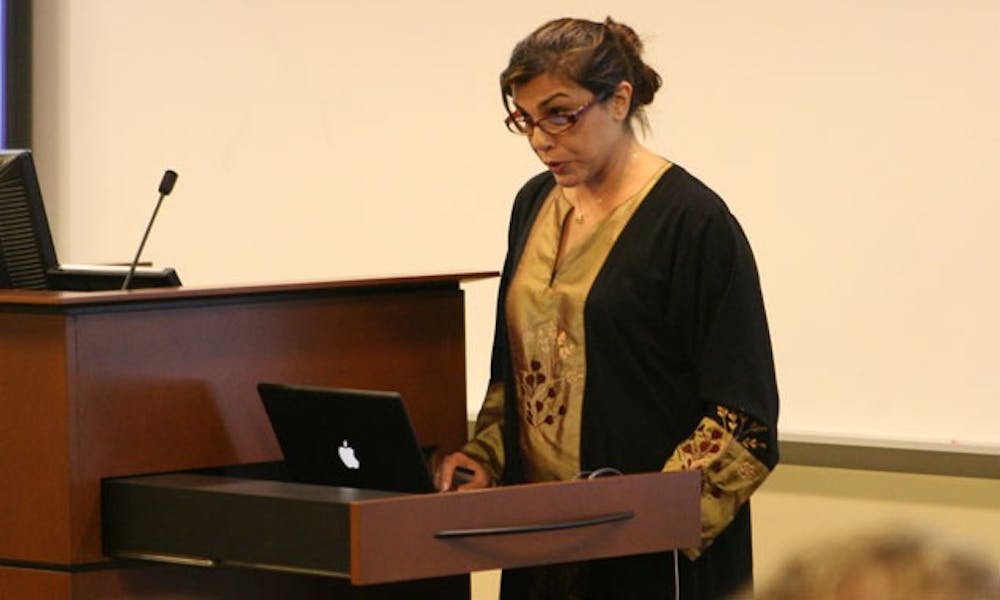Social media may just be the new megaphone for revolution.
“Witnessing Iran: 1979 and 2009” was the theme of a discussion led by two experts who explored the pivotal role social media has played in Iran’s volatile political history in the last three decades.
Moderated by Bruce Kuniholm, dean of the Sanford School of Public Policy, the event featured Negar Mottahedeh, an associate professor of literature and expert in social media in Iran, and Mark Bowden, author of “Guests of the Ayatollah,” a book documenting the 1979 hostage crisis in Iran.
Mottahedeh began by pointing out that post-election unrest in Iran this summer was publicized first through social media, like Facebook and Twitter. By posting information and videos about demonstrations online, Iranian activists were occasionally able to escape constraints imposed by Iranian authorities.
“Social media became a model for reporting, collaborating and organizing the campaigns,” Mottahedeh said.
For example, leaders of the opposition movement in Iran were able to use online communication to get followers to plug in electrical appliances whenever President Mahmoud Ahmadinejad appeared in television broadcasts, Mottahedeh noted. The ensuing power outages prevented the president’s supporters from seeing his speeches.
Social media was also used to broadcast domestic unrest to the global community. For two weeks following Iran’s election, Mottahedeh said, the most popular hashtag on Twitter was #iranelection.
Similarly, in an environment where the state-run media was perceived as a “lie broadcaster,” Iranians turned to alternate sources of information.
“You didn’t go to CNN, you went to YouTube,” Mottahedeh said. “Videos give you a flavor of what is going on on the ground.”
Bowden said innovative forms of media have always played a role in Iran’s politics. An exiled Ruhollah Khomeini, who later became Iran’s Supreme Leader, used cassette tapes to disseminate his lectures to the Iranian populace immediately proceeding the 1979 revolution that brought him to power, for instance.
“New media has been a piece of this story all the way through,” Bowden said.
Bowden added that Iranian students who took hostages in the American embassy also used media to publicize their message and keep it in the spotlight.
“American journalists flooded and were welcomed into the country,” he said.
If it weren’t for extensive coverage by media networks with journalists situated in Tehran, Bowden said the “story would have faded into the back pages of the newspaper.”
Still, Bowden noted the development and use of social networks has come at the expense of unbiased, in-depth reporting.
“[Social media] functions more as a tool for political activism than journalism,” he said. “The emergence of these digital tools is a tremendous threat to tyrants everywhere. It’s also destroying journalism.”
So when Mottahedeh pointed out that the inclusion of a dated newspaper in a video is often an easy way to prove when it was filmed, Bowden interjected.
“Newspapers will survive!” he said.
Get The Chronicle straight to your inbox
Signup for our weekly newsletter. Cancel at any time.

